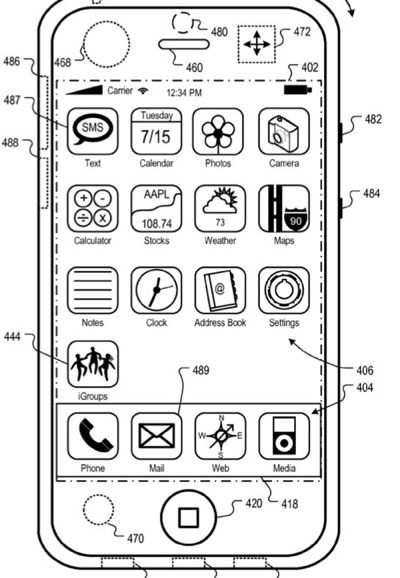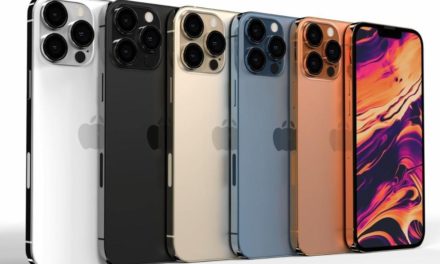Coming next to the iPhone, iPod touch and iPad may be a component called iGroups. According to a new Apple patent (number 20100070758) at the US Patent & Trademark Office, Apple is working on group formation using anonymous broadcast information.
The invention involves a number of devices co-located at a geographic location can broadcast and receive tokens. Tokens can be exchanged using a communication link having limited communication range. Tokens that are received by a device can be stored locally on the device and/or transmitted to a trusted service operating remotely on a network. In some implementations, the tokens can be stored with corresponding timestamps to assist a trusted service in matching or otherwise correlating the tokens with other tokens provided by other devices. The trusted service can perform an analysis on the tokens and timestamps to identify devices that were co-located at the geographic location at or around a contact time which can be defined by the timestamps. A group can be created based on results of the analysis. Users can be identified as members of the group and invited to join the group. The inventors are Daryl Mun-Kid Low, Ronadl Keryuan Huang, Punett Mishra, Faurav Jain, Jason Gosnell and Jeff Bush.
Here’s Apple’s background and summary of the invention: “Social networking has revolutionized the way people communicate and share information with one another. Online social networks are communities of individuals who share interests and activities or who are interested in exploring the interests and activities of others. Many social network services are web-based and provide a collection of various ways for users to interact, such as chat, messaging, email, video, voice chat, file sharing, blogging and discussion groups. Social network websites typically provide tools and communication infrastructures for organizing and managing social networks.
“During private or public events (e.g., concert, tradeshows, business meetings, weddings, rallies), a typical individual may have many brief contacts with individuals for which they would like to have further correspondence post event. With conventional social network websites, the individual would have to collect personal information from the contacts, manually create a social network on the social network website and invite the contacts to join. Some of the contacts, however, may not be registered with the social network website, and will have to register before joining the social network.
“Modern wireless devices can operate in an ad hoc mode (e.g., Bluetooth personal area network (PAN) or piconet) which allows wireless devices within range of each other to discover and communicate in peer-to-peer fashion without involving central access points. The ad hoc network, however, only exists while the participating devices are in close proximity to each other. There is no facility for regenerating the network at a later time to allow users to continue discussions or exchange content. Users who wish to participate in a PAN have to manually configure their devices or adaptors to do so, which can be tedious and time consuming. The informal nature of ad hoc networks, coupled with the lack of a centralized and secure access points, makes ad hoc networks susceptible to snooping and other attacks.
“A number of devices co-located at a geographic location can broadcast and receive tokens. Tokens can be exchanged using a communication link having limited communication range. Tokens that are received by a device can be stored locally on the device and/or transmitted to a trusted service operating remotely on a network. In some implementations, the tokens can be stored with corresponding timestamps to assist a trusted service in matching the tokens with tokens provided by other devices.”
“The trusted service can perform an analysis on the tokens and timestamps to identify devices that were co-located at the geographic location at a given contact time which can be determined by the timestamps. A group can be created based on results of the analysis. Users of the Group devices can be invited to join a group. User interfaces, filters and search engines can be provided to the users to enable users to search and manage groups. The groups can be used with various applications (e.g., calendars, address books, email, instant messaging) to provide additional content and services to the users. If the geographic location of the group at the contact time is known, then members of the group can be targeted to receive location-based services (LBS) and content.”
— Dennis Sellers



